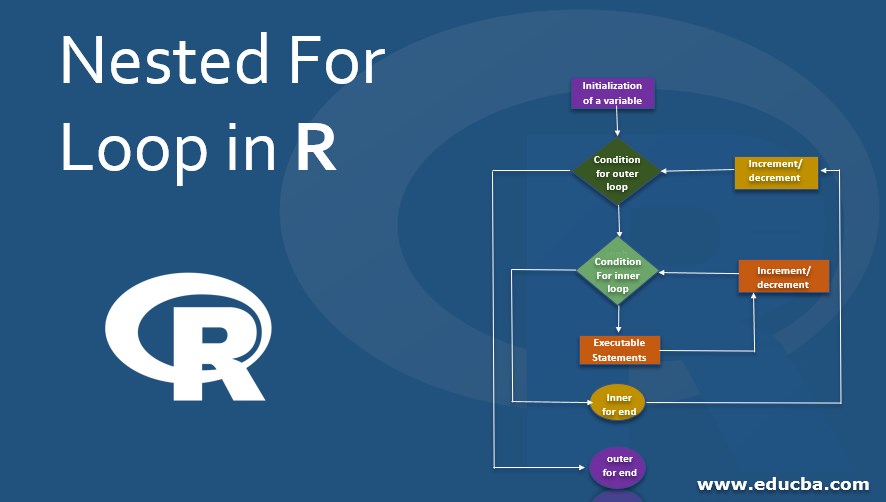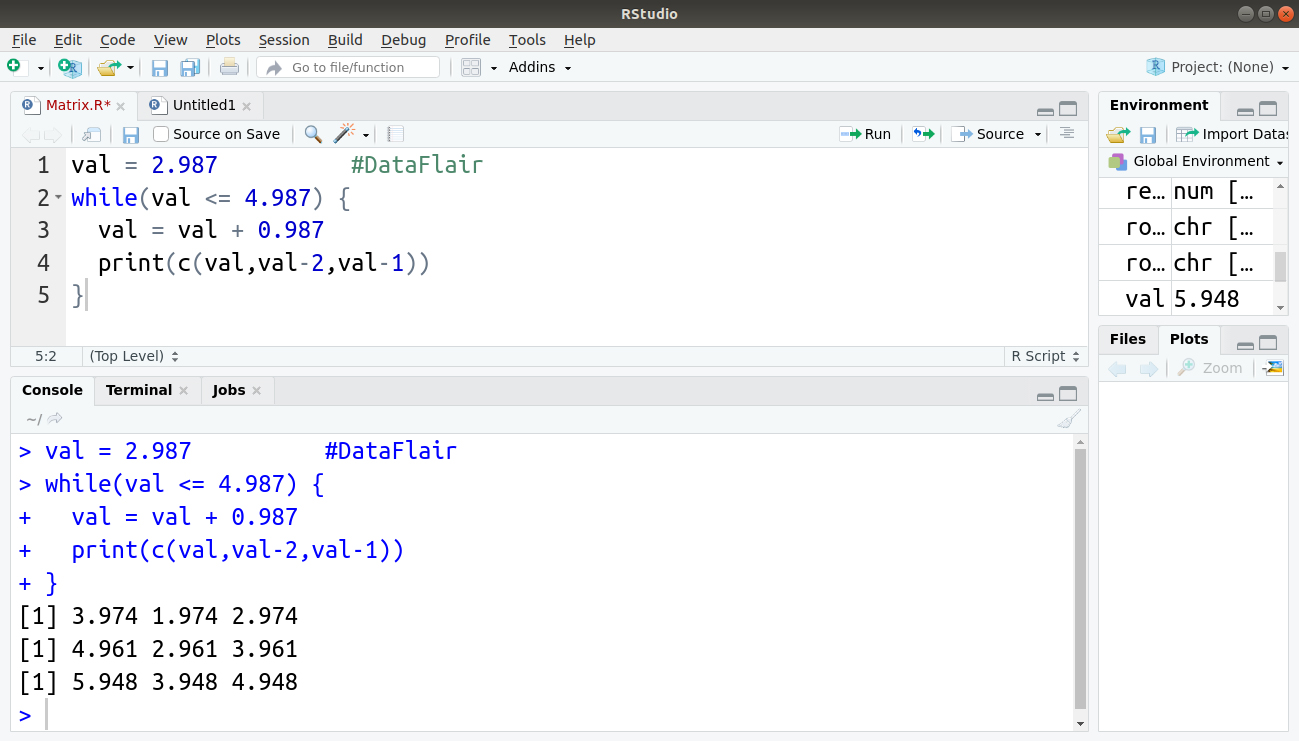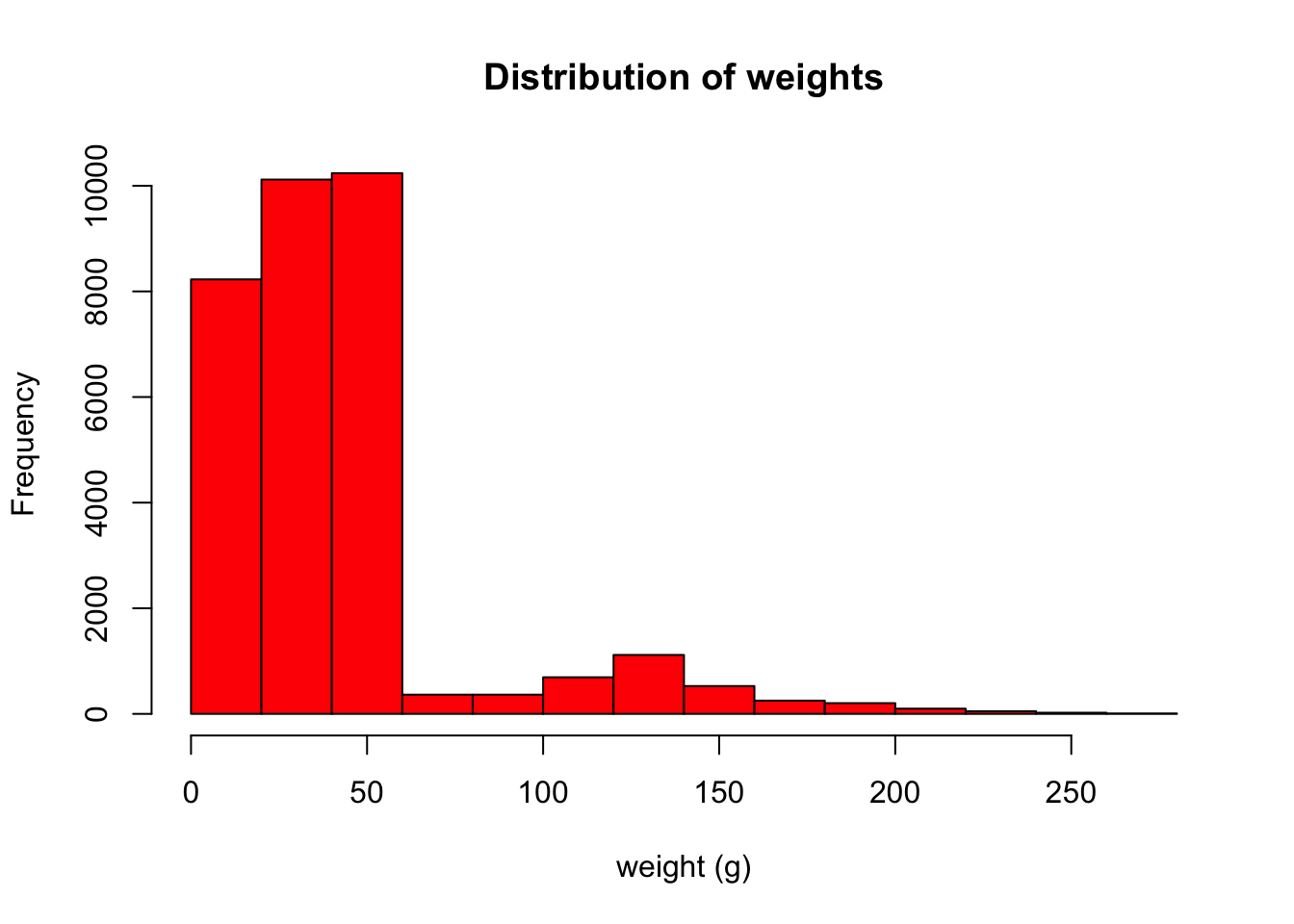

If you are having problems with your loop, it could be one of these silly mental slips.ĭid you reset your vector inside the loop? Is it possible you put a new.vector = NULL inside the loop instead of before it? Yeah, I’ve done it. However the 5th element of foo will be foo, which is equal to 9. For example when we’ve looped through the instructions 4 times, the next loop will be loop number 5 (so i=5). If you are new to programming it is sometimes difficult to keep straight the difference in the number of loops you are on versus the value of the element of vector being operated on. For our new vector foo.squared, the ith element will equal the number of loops that we are on (for the first loop, i=1 second loop, i=2). The counter we set up is ‘i’ (but you can put whatever variable name you want there).
HOW TO USE LOOP IN R CODE
This code says we’ll loop 50 times( 1:50). So, we set up an empty vector to add stuff to later (note that this isn’t the most speed efficient way to do this, but it’s fairly fool-proof).

R doesn’t like being told to operate on a vector that doesn’t exist yet. If the creation of a new vector is the goal, first you have to set up a vector to store things in prior to running the loop. I’m going to set up a loop to square every element of my dataset, foo, which contains the odd integers from 1 to 100 (keep in mind that vectorizing would be faster for my trivial example – see below). Use the for loop if you want to do the same task a specific number of times. ?'for' will get you the help page but it is by no means exhaustive.) So, at the request of Sam, a faithful reader of the Paleocave blog, I’m going to throw my hat into the ring and brace myself for the potential onslaught of internet troll wrath. In fact, even searching for help within R is not easy and not even that helpful when successful ( ?for won’t get you anywhere. I was astounded by the lack of useful posts when I googled “for loops in R” (the top return linked to a page that did not exist). And, to top it off, good help is hard to find. This approach is useful for keeping track of how many times a loop repeated or took action once a certain count is reached.There may be no R topic that is more controversial than the humble for-loop. Wait 2.5 // Wait long enough to allow the scrolling action to "settle"īehavior: The counter or repeatIndex function returns the current iteration count of the innermost executing repeat loop. TypeText PageDown // Scrolls the screen toward the bottom of the page Repeat at least once while not imageFound ( image: refImage, searchRectangle: ClippingRectangle, waitFor: 0 ) // Forces the statements within the repeat loop to happen at least once, even if the condition is immediately metĬaptureScreen ( Name: "state", Rectangle: ClippingRectangle) // Captures a new screenshot of the SUT Put the result into refImage // Stores the file path of the CaptureScreen image in a variable y ) into ClippingRectangleĬaptureScreen ( Name: "state", Rectangle: ClippingRectangle) // Captures a screenshot of the SUT, only in the center portion of the screen

Put RemoteScreenSize () into DUTScreenSize // Stores the size of the screen of the SUT Use code like below to detect when you've scrolled to the bottom of a page/screen. In cases where subitemType is a type of text chunk, the actual chunk of text will be stored in it or in variable. In cases where subitemType is a type of object, the long id of the specific subObject will be assigned to it or variable each time through the loop. Otherwise, if variable (or it) is already a reference, it will be reset to be an ordinary variable before being used as the loop variable. If by reference is specified, variable is set to be a reference to each subitem. In the first format, where no specific variable is specified, the variable it is used. In the second and third formats, variable is the name of a variable which will be assigned the identifier or contents of a particular subitem each time through the repeat loop. In all forms of the repeat with each statement, subitemType indicates the type of item being iterated over (if omitted in the third format shown above, "item" is assumed), and containingItem is the specific object or container whose parts are being iterated over. Virtually any of the combinations of subitemType and containingItem that are allowed with the number function can be used (that is, anything that can be counted within some containing object or container). These repeat formats execute the statements within the repeat loop (until the matching end repeat statement) exactly once for each object or part (as specified by subitemType) that is contained within the specified containingItem.


 0 kommentar(er)
0 kommentar(er)
